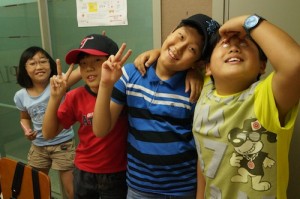Never a Bad Student

I hear it often from teachers. “He’s just a bad student,” or “That child is just a troublemaker.” As though it’s an integral, unchangeable part of his or her personality, actually, there is never a bad student.

You might not think that you are quite that extreme in dismissing some students as irreparably “bad,” but chances are that you have a few students who you expect to misbehave every class – if you take some time to consider your attitudes toward them, you might be surprised to find how deeply and how subtly your perception of them as “troublemakers” is ingrained into your approach to teaching them.
Here are a few reasons why there really is no such thing as “bad” students:
Being labeled and treated as “bad” creates a self-fulfilling prophecy
The stories we tell ourselves are powerful. The stories other people tell us are even more powerful. Those stories can do so much to shape who and what we are, even if they aren’t initially true.
Kids, especially, are incredibly susceptible to being shaped by the simplest of stories that we tell about them. And the truth is that those stories are created not just with the words that you say, but with your attitudes and your beliefs.
You might never directly tell a student that you think he’s a “bad kid,” or a “problem.” But if you think that way, it comes out. You cease to give him the benefit of the doubt, your tone with him is slightly different than with other students, you jump on tiny misbehaviors because you assume the worst, you show a lack of trust in the student and don’t assign him any responsibility in the classroom.
All of these things create and perpetuate the story that he’s “bad,” to the point where even he starts to believe it’s true.
Any misbehavior is an expression of a need not being met
It might be a need for validation, or for attention, or the need of a struggling student to feel on par with her classmates, or a simple physical need to move after being cramped in a chair all day.
Whatever the need is, if it’s not being met and they don’t have the means to change their situation, many students will react by finding their own way to meet that need, which usually involves breaking the rules. So, instead of thinking that a particular student is just trying to be a pain in your butt, ask yourself what need they are trying to meet that is not being met in class, and how you can set up a situation where that need is being met.
Look at their misbehavior as a cry for something, not a reflection of them as a person. If this girl just physically can’t stay still, can you play more active games? If she craves attention, can you make her your assistant for the day or let her facilitate an activity or game?
If this boy needs to be validated and right now can only feel that way by being the class clown, can you create an activity where he can channel that humor into a play, performance, or daily English-language joke?
You don’t know the whole story
We are all incredibly complex, multi-faceted beings. The student that you see sitting in your classroom is just one tiny facet of who that child really is. It’s not always easy to keep the perspective that this child has so many other complex parts to her life – family, friendships, other classes, hobbies, sports, books and movies, hopes and dreams and fears – and that you are barely glimpsing the surface of it all.
But they need to be seen and treated as complex human beings, especially the ones that often break the rules. It might be that a child is often blamed and yelled at at home, and that is the only way she knows how to relate to adults, so she subconsciously creates situations to continue that dynamic.
A student may be struggling with intense academic pressure in other subjects, and just can’t handle being pushed any more academically. Another student may have very difficult family situations that shape his perspective on school and his ability to concentrate or participate.
You may never know even part of the story, and you certainly will never understand the whole story, but often just approaching these students with sympathy and openness can start to give you some insights into who they really are and what they really need.
Whether you take any specific actions or not, simply changing your attitude toward those “problem” students is often the most important step you can take. They will sense it, and you will be much farther along on your way to actually reaching them and making a difference in their lives.



